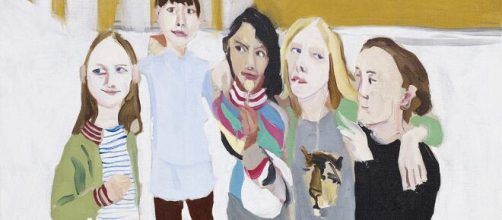If you've ever watched with horror the TV series "Outlander" recounting how the Scottish Highland culture died a calamitous death in 1745, the British army decimated an uprising like a power mower cutting grass, take heart. The exuberant spirit of the Highlanders not only lived another century if you count the 19th-century Scottish art world, but it also lives in that world today. An exhibit at the National Galleries of Scotland, titled The Glasgow Boys and Girls, is a 40-work display of latter-day Scots celebrating their insurgency against traditional art, making clear that the spirit of Outlander rebellion lives.
A rising of a second kind
The spirit of the Highlander rebels first showed up in Scotland's artmaking when it pushed back at old academic styles, along with the old roles of women. Their modernism brand drove them out of their studios into the Great Outdoors to paint - not unlike the French Impressionists in the same century. As Jonathan Jones, art critic at The Guardian, noted in his writeup of the Glasgow exhibit, the talents of male and artists alike shared the spotlight in the 19th century Scotland.
Ahead of Van Gogh
Jones singled out the moving work of Flora Macdonald Reid titled Fieldworkers, painted in 1883 when she was only 16 years old. The image went on view at the Royal Scottish Academy, one of many honors accorded this picture.
What you see is a rough-hewn description of worn laborers at rest – similar to Van Gogh's Post-Impressionist-styled Potato Eaters, except Van Gogh's picture was made two years after Reid painted Fieldworkers.
Also noteworthy is Reid's focus on one of the workers, a female intently reading a sheaf of papers – a newspaper, perhaps – and looking to be informing the workers around her.
Letting loose
This is a good Segway to Diane Gabaldon, author of the historical fiction on which Outlander's TV series was based. Her fiction informs the reader in a most stirring way. The main character, Claire Randall, a married WWII combat nurse, finds herself abruptly transported through time from 1945 Scotland to 1743, where she meets the Highlander soldier James Fraser, and y falls in with his life and the risings against the British.
As enchanting as her Book is, Gabaldon's thoughts on writing it are downright astonishing.
Brave new world
Gabaldon reveals on her website that she began writing her book - a tome, really, on the order of Leo Tolstoy's War and Peace – by accident. All she had set out to do was figure out how to write a novel. And because she didn't expect anyone to see the exercise, she felt free to let loose with whatever came into her head. What you get, then, are graphic descriptions of war, torture, violence, betrayal, vengeance, lovemaking – a lot of that - and dangerous sea voyages; or as she put it, "the usual stuff of literature."
The stuff of art
If that's the usual stuff of literature, Reid's Fieldworkers is the stuff of art full of feeling, sweating brows, and an ahead-of-her-time look at what women do in art besides pose for pictures wearing only a smile – if that.


